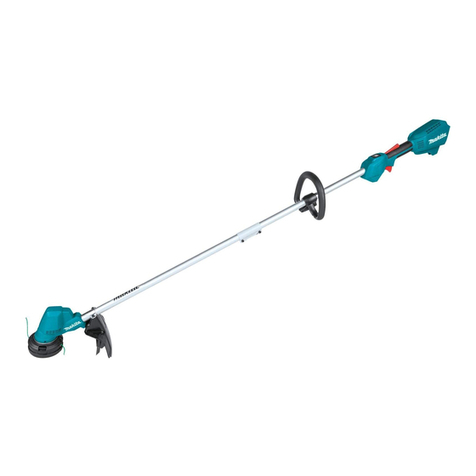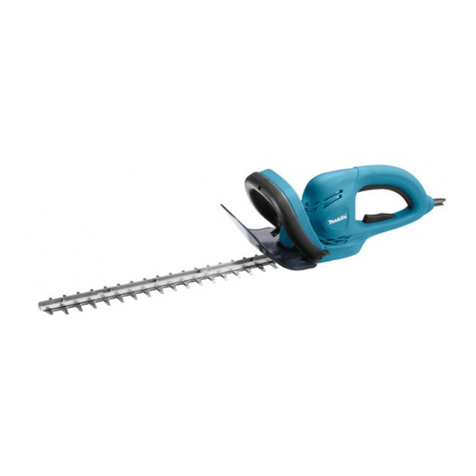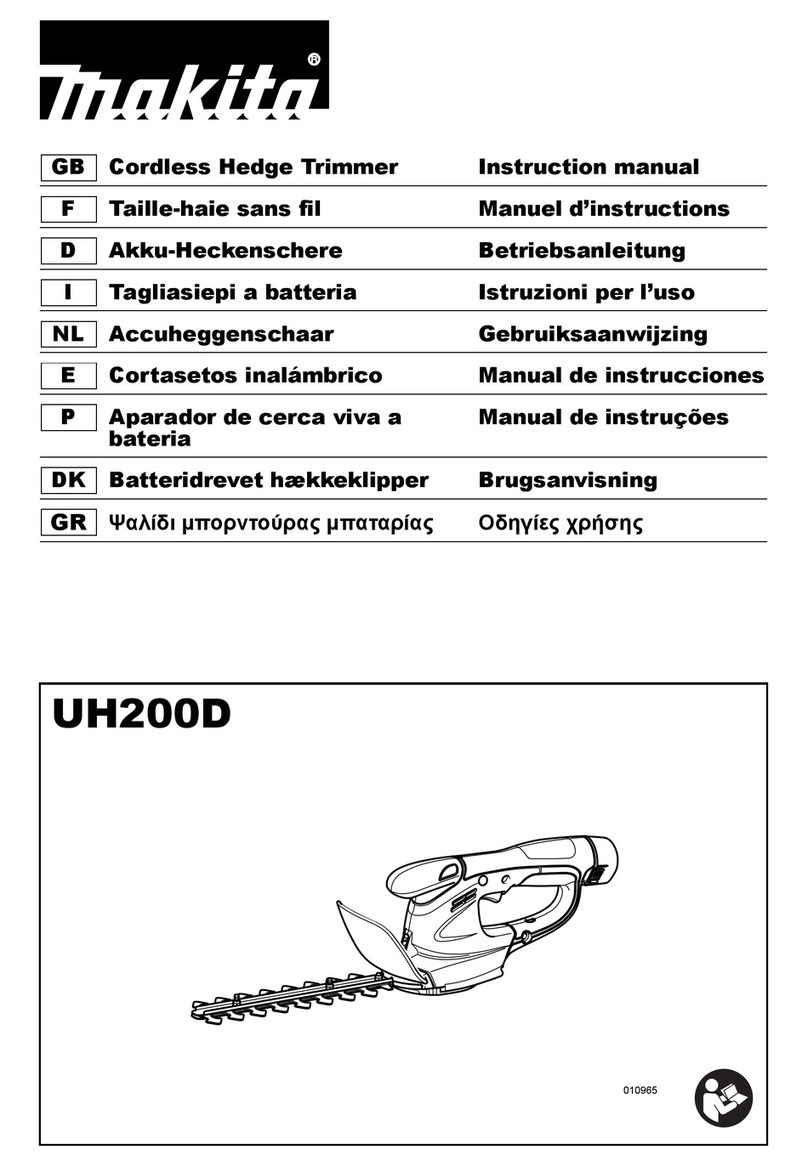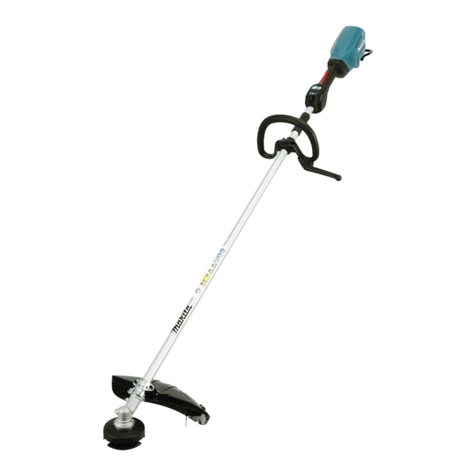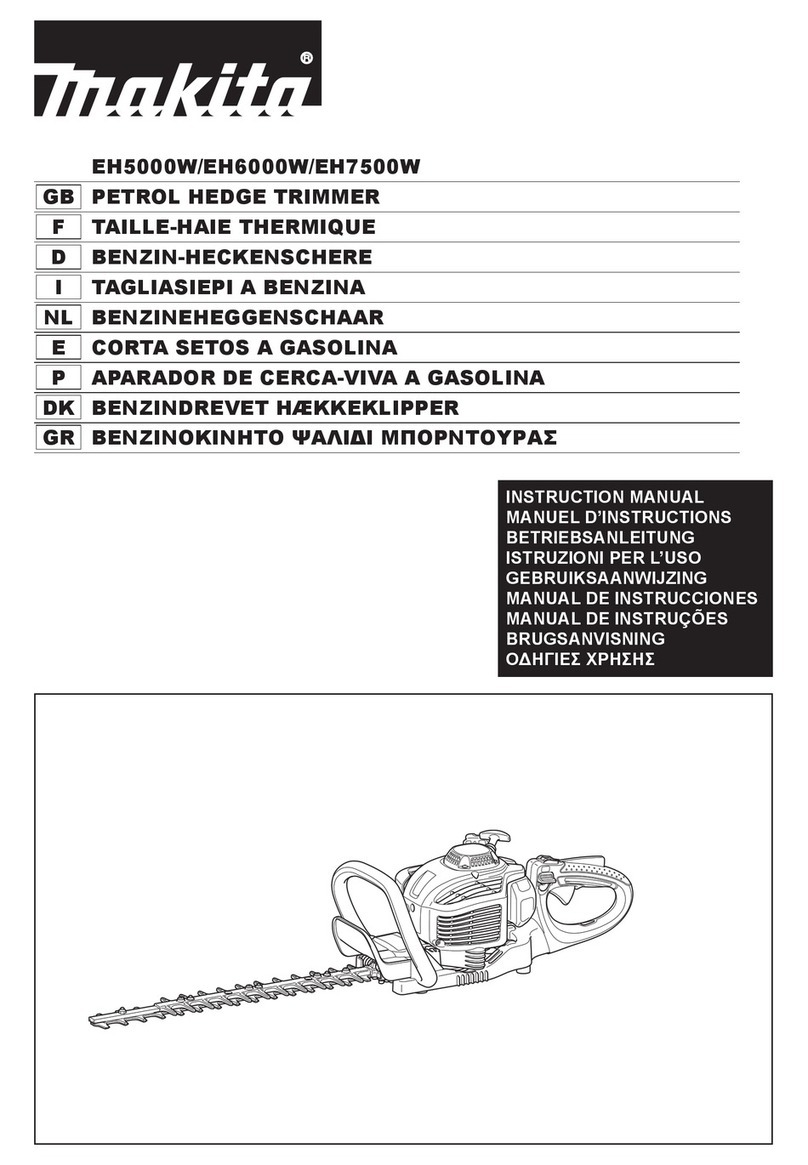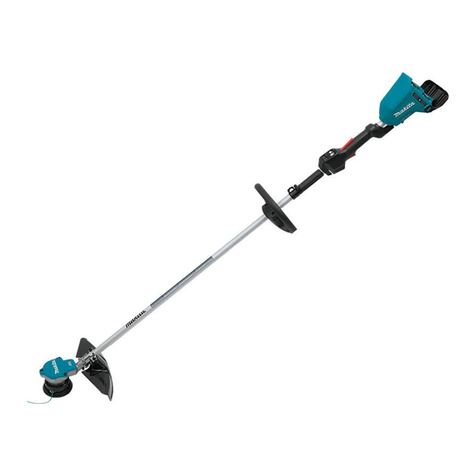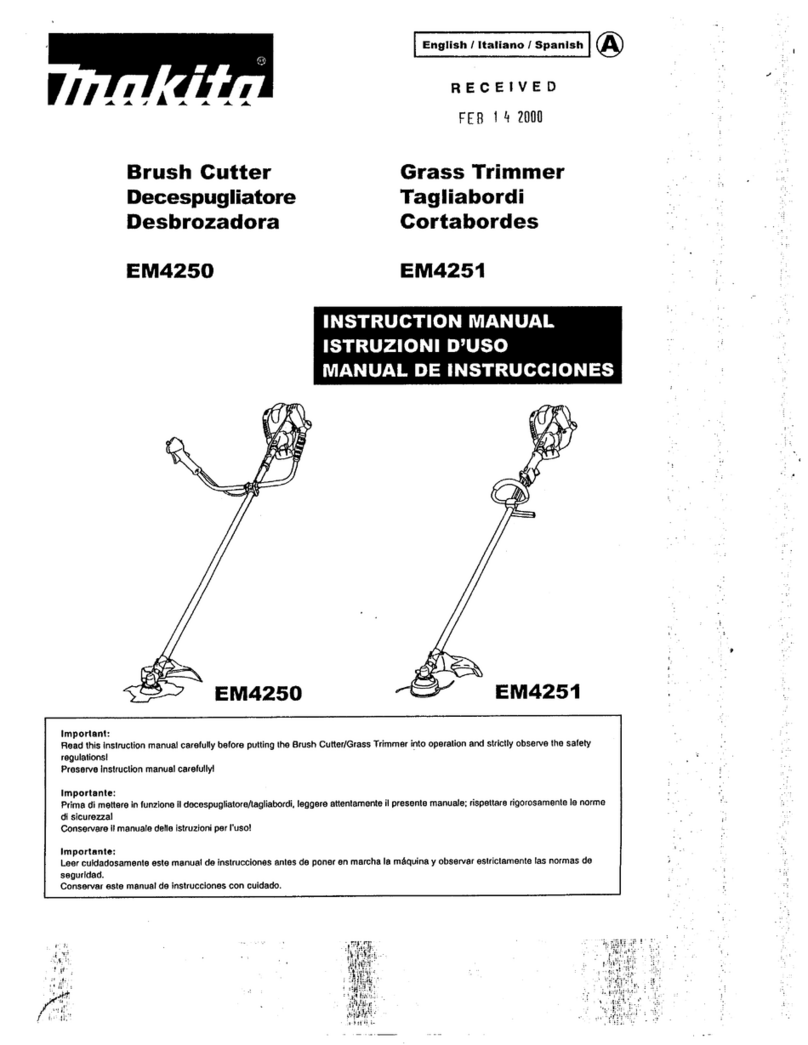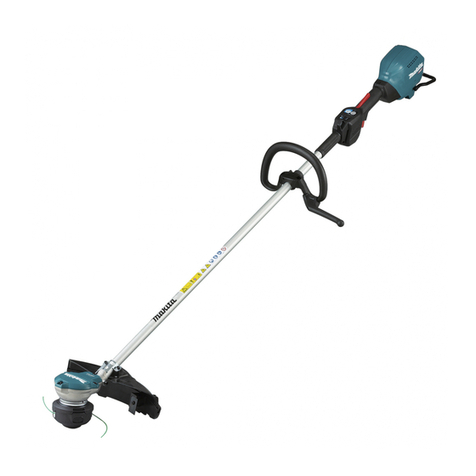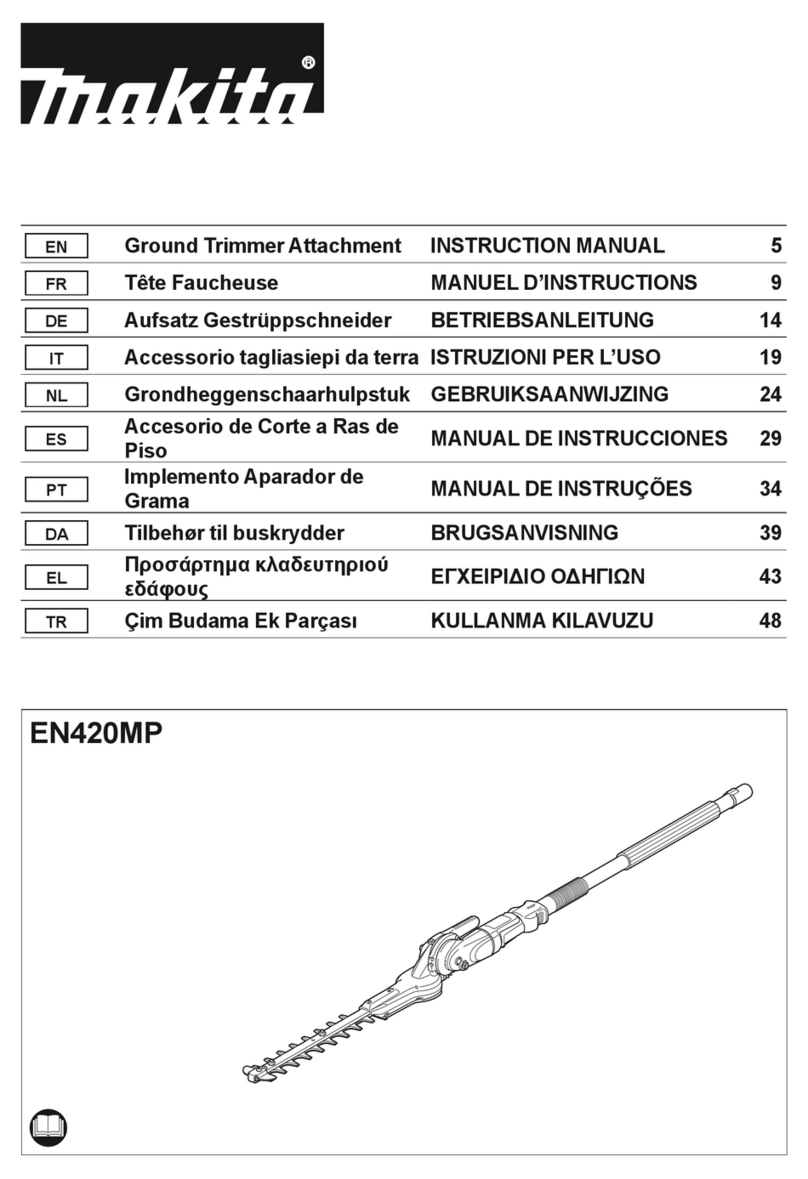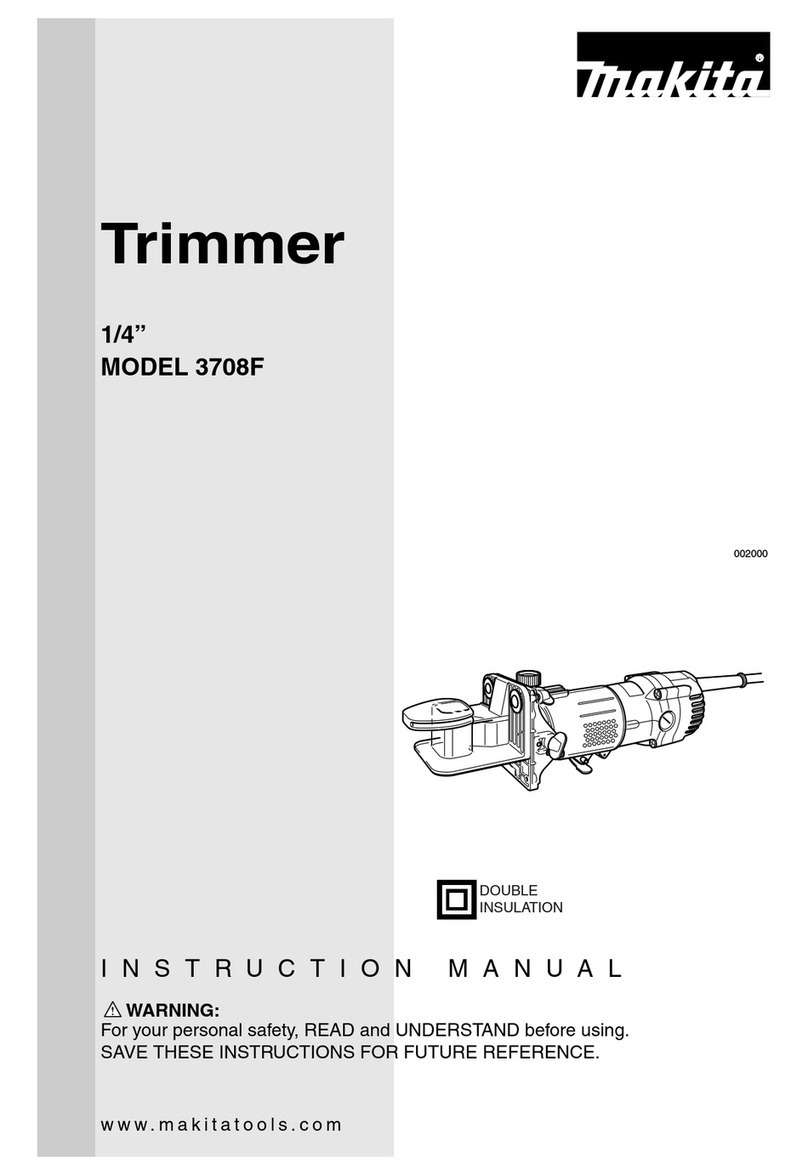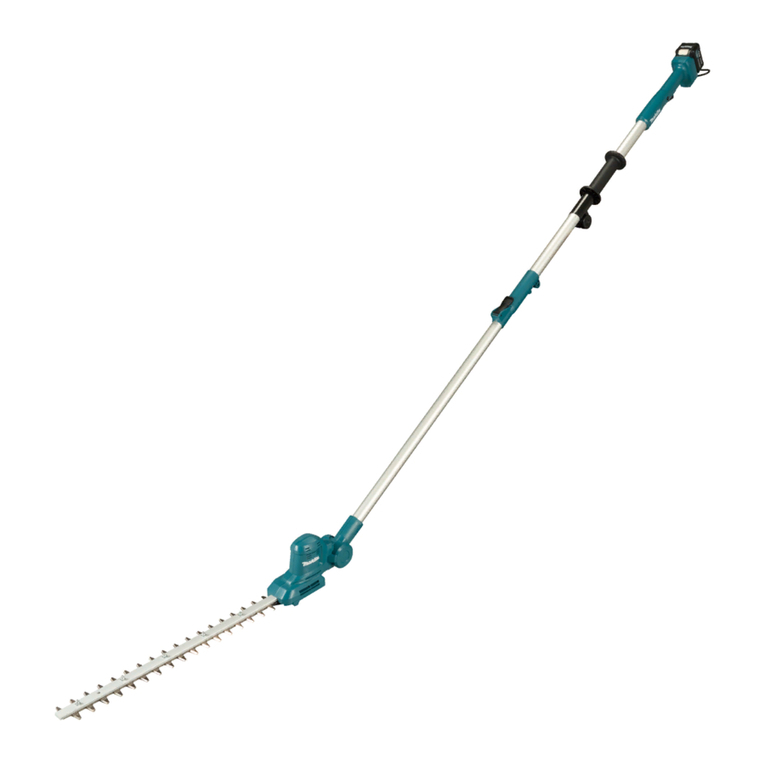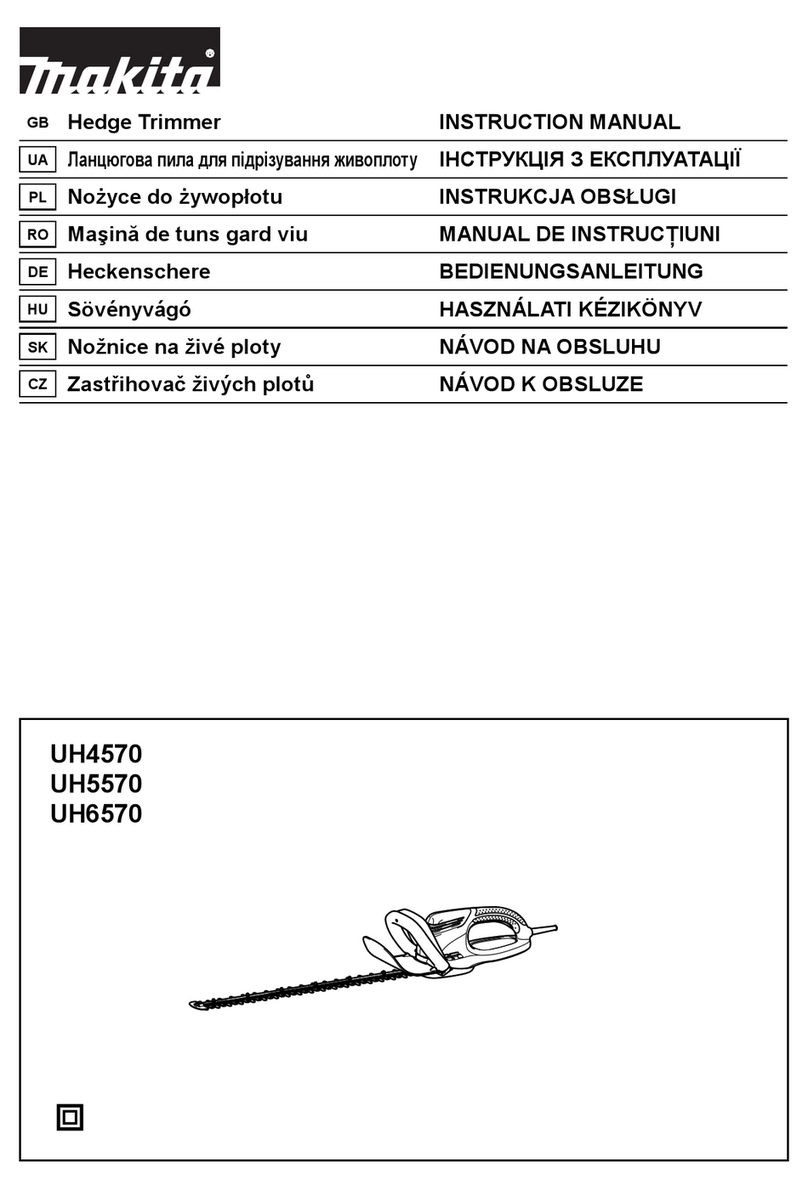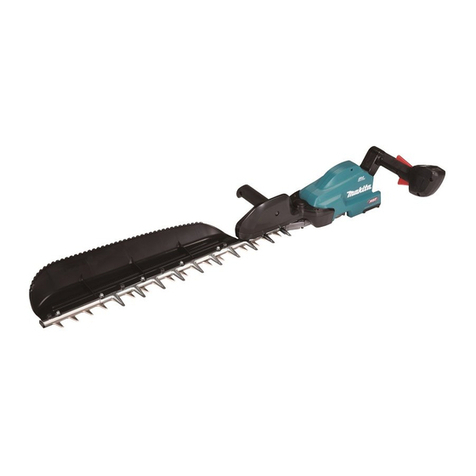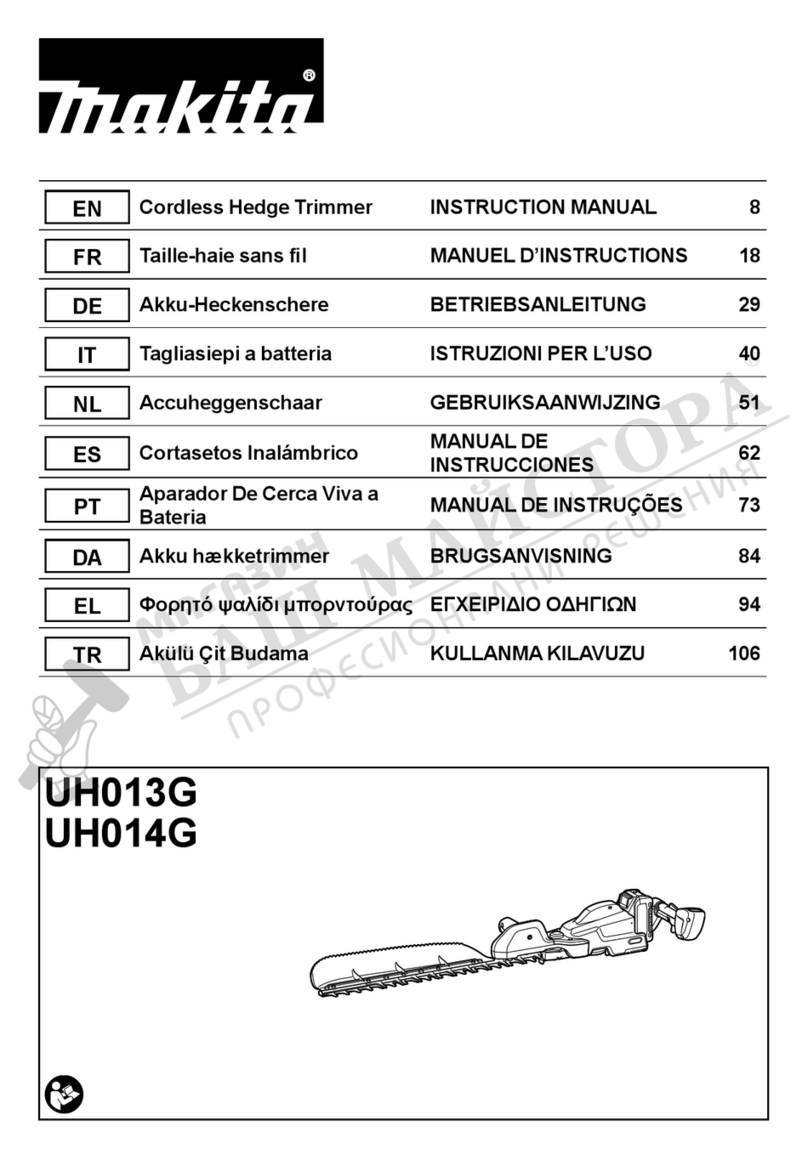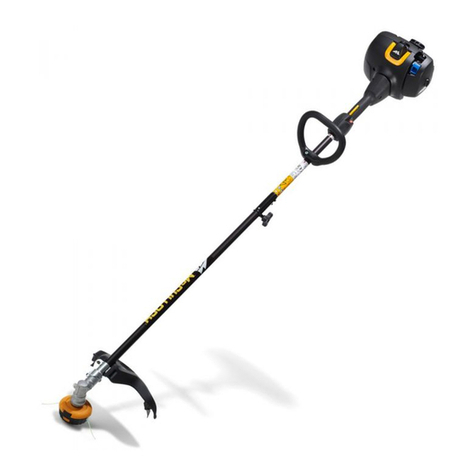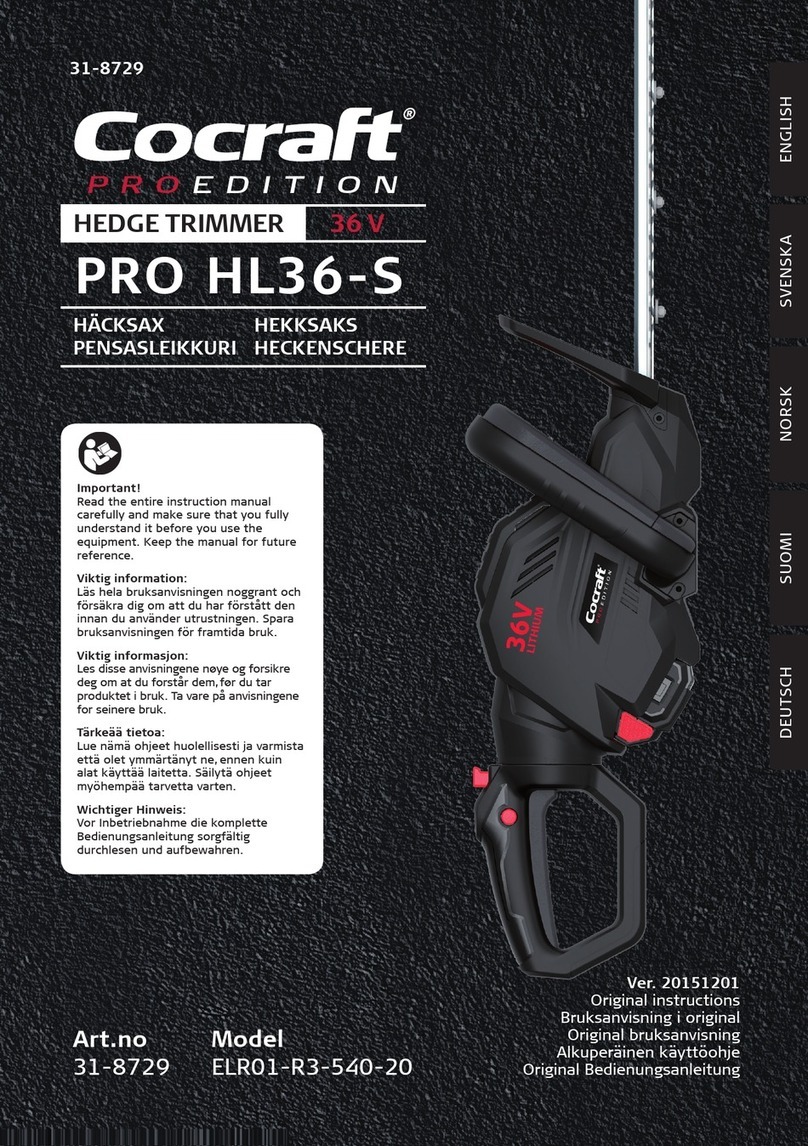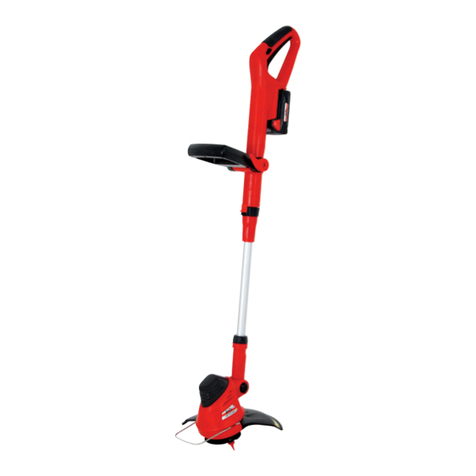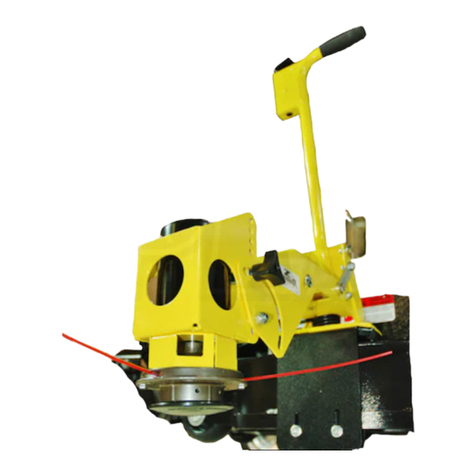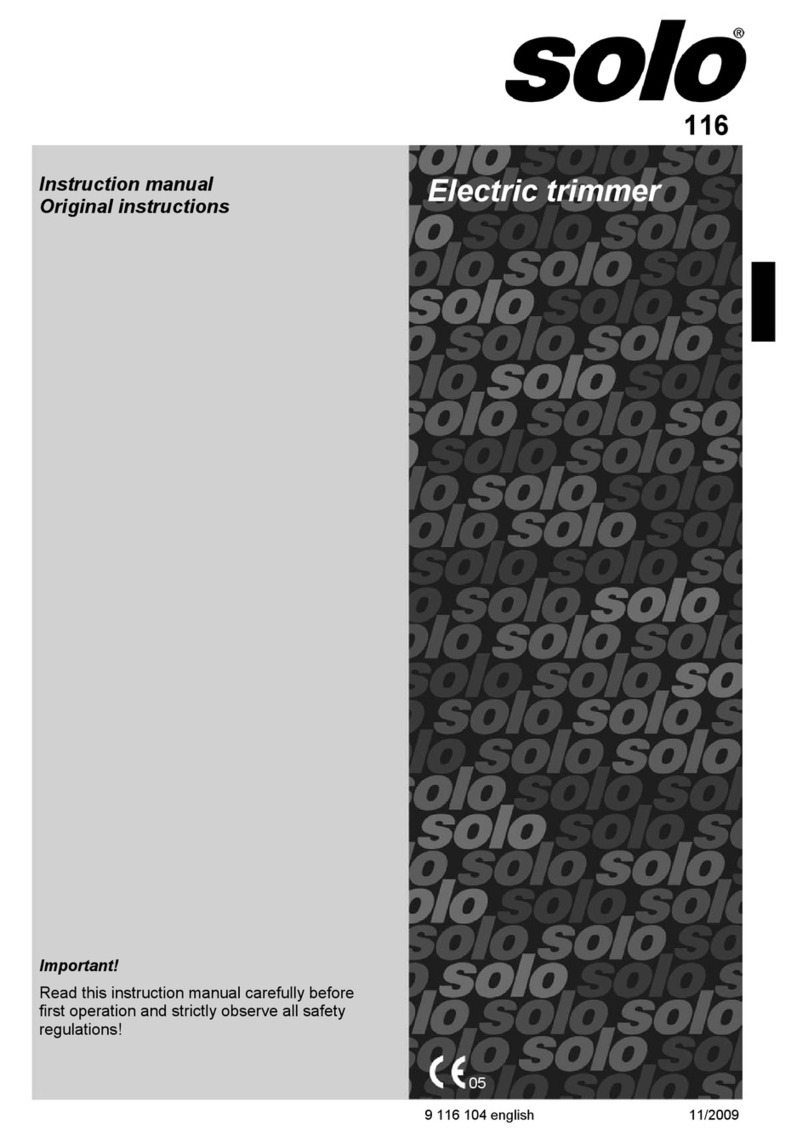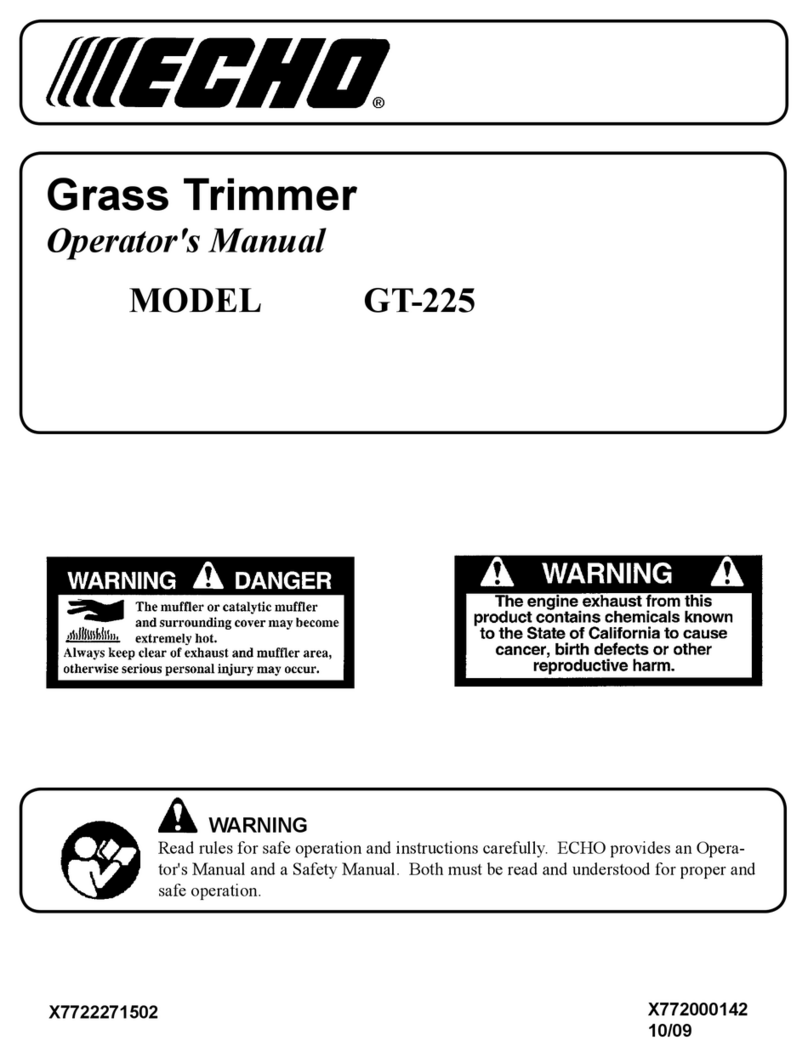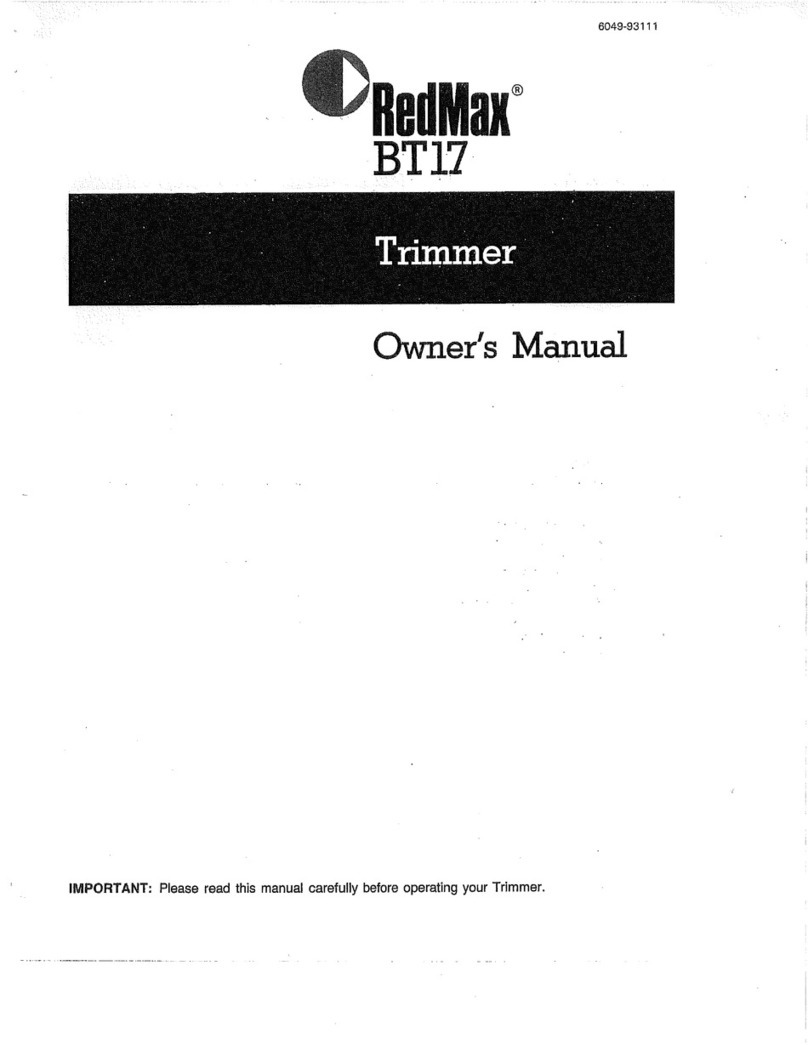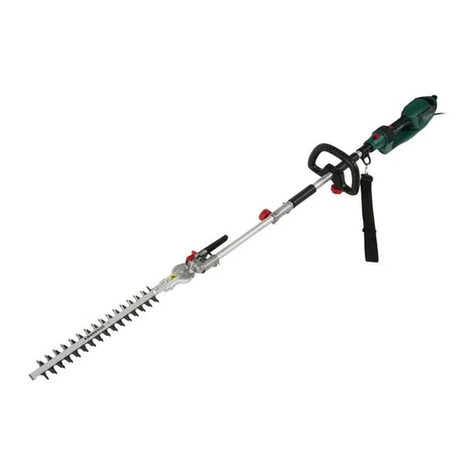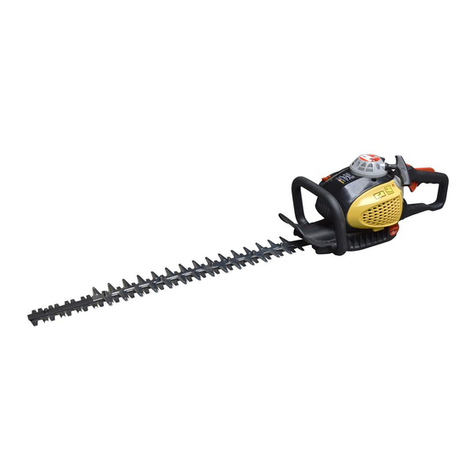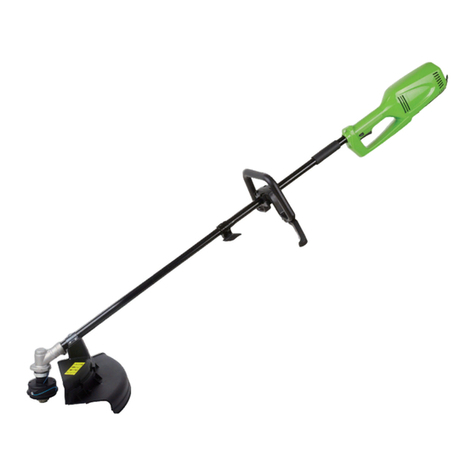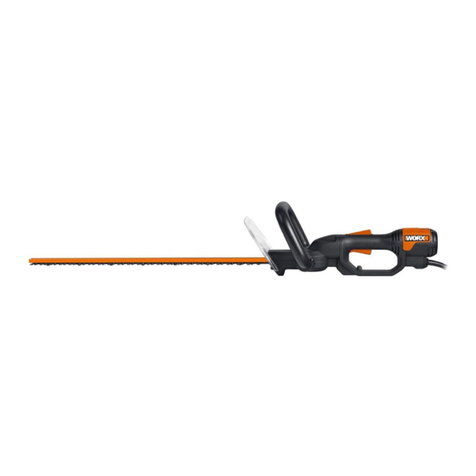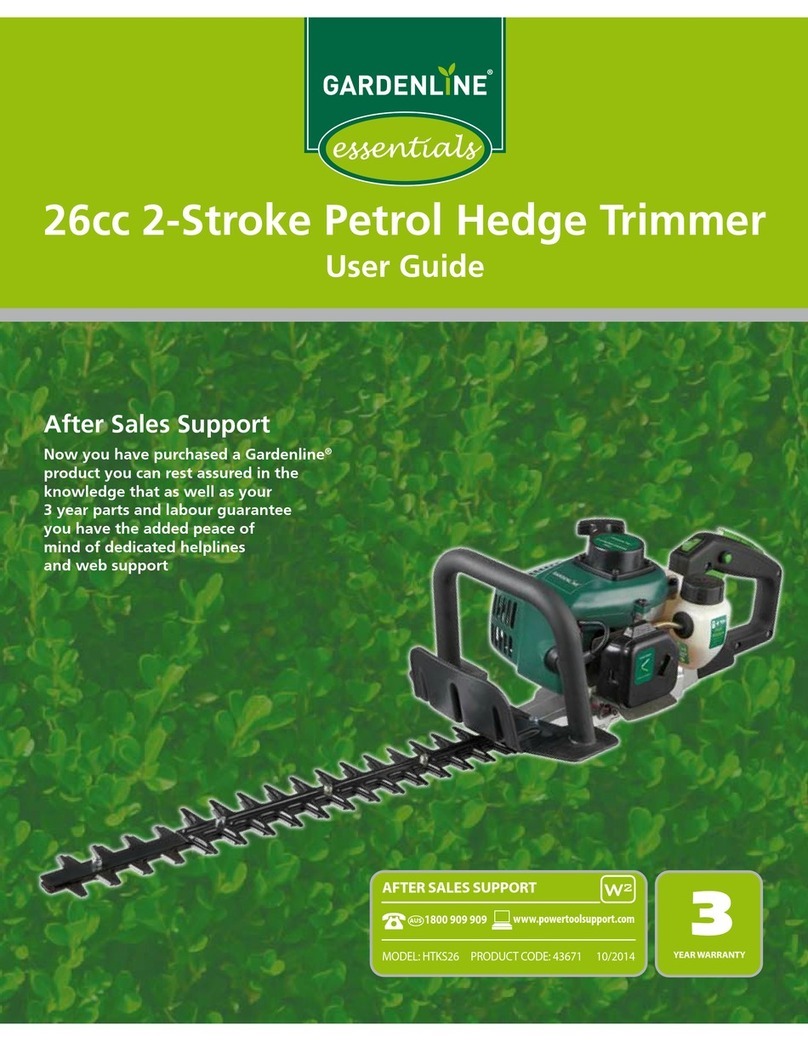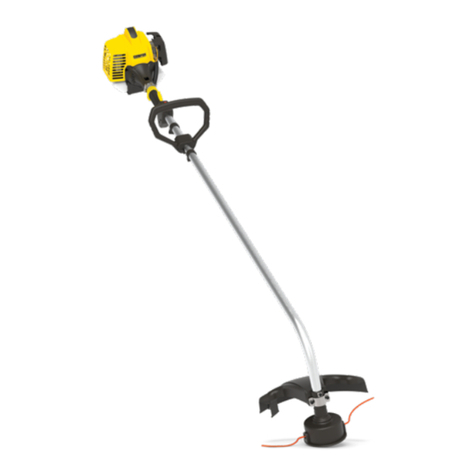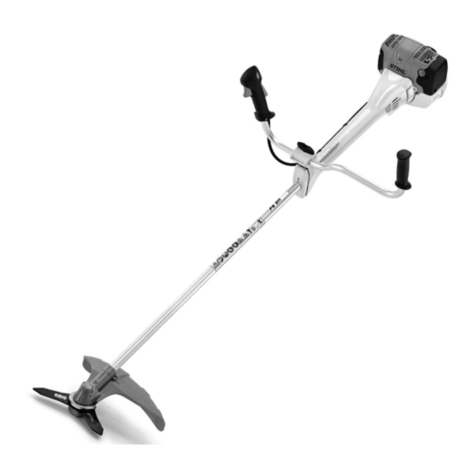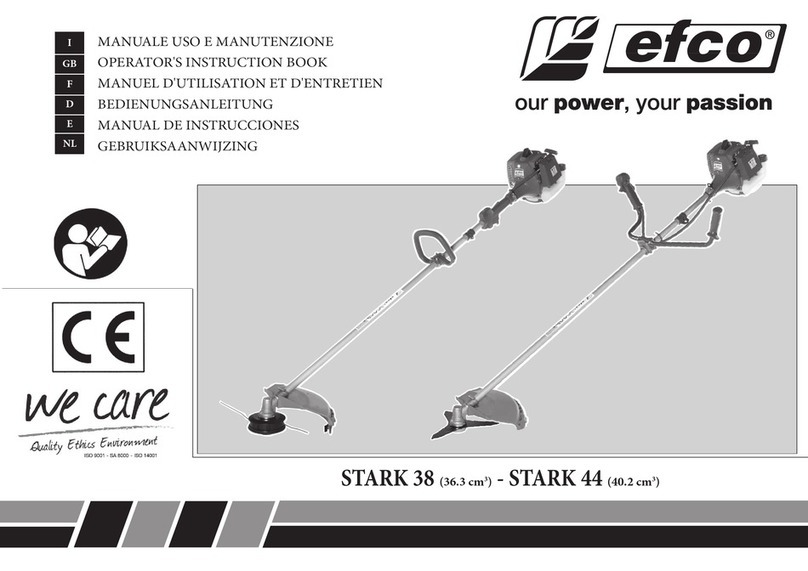
6ENGLISH
10. Do not replace the battery with wet hands.
11. Do not replace the battery in the rain.
12. Do not wet the terminal of battery with liquid
such as water, or submerge the battery. Do not
leave the battery in the rain, nor charge, use,
or store the battery in a damp or wet place. If
the terminal gets wet or liquid enters inside of bat-
tery, the battery may be short circuited and there is
ariskofoverheat,re,orexplosion.
13. After removing the battery from the tool or
charger, be sure to attach the battery cover to
the battery and store it in a dry place.
14. If the battery cartridge gets wet, drain the
water inside and then wipe it with a dry cloth.
Dry the battery cartridge completely in a dry
place before use.
Putting into operation
1. Before assembling or adjusting the tool,
remove the battery cartridge.
2. Before handling the cutter blade, wear protec-
tive gloves.
3. Before installing the battery cartridge, inspect
the tool for damages, loose screws/nuts or
improper assembly. Sharpen blunt cutter
blade. If the cutter blade is bent or dam-
aged, replace it. Check all control levers and
switches for easy action. Clean and dry the
handles.
4. Never attempt to switch on the tool if it is dam-
aged or not fully assembled. Otherwise serious
injurymayresult.
5. Adjust the shoulder harness and hand grip to
suit the operator's body size.
6. When inserting a battery cartridge, keep the
cutting attachment clear of your body and
other object, including the ground. It may rotate
whenstartingandmaycauseinjuryordamageto
the tool and/or property.
7. Remove any adjusting key, wrench or blade
cover before turning the tool on. An accessory
left attached to a rotating part of the tool may
resultinpersonalinjury.
8. The cutting tool has to be equipped with the
guard. Never run the tool with damaged guards
or without guards in place!
9. Make sure there are no electrical cables, water
pipes, gas pipes etc. that could cause a hazard
if damaged by use of the tool.
Operation
1. In the event of an emergency, switch o the
tool immediately.
2. If you feel any unusual condition (e.g. noise,
vibration) during operation, switch o the
tool and remove the battery cartridge. Do not
use the tool until the cause is recognized and
solved.
3. The cutting attachment continues to rotate for
a short period after turning the tool o. Don't
rush to contact the cutting attachment.
4. During operation, use the shoulder harness.
Keep the tool on your right side rmly.
5. Do not overreach. Keep proper footing and
balance at all times. Watch for hidden obsta-
cles such as tree stumps, roots and ditches to
avoid stumbling.
6. Always be sure of your footing on slopes.
7. Walk, never run.
8. Never work on a ladder or tree to avoid loss of
control.
9.
If the tool gets heavy impact or fall, check the
condition before continuing work. Check the
controls and safety devices for malfunction. If
there is any damage or doubt, ask our authorized
service center for the inspection and repair.
10. Do not touch the gear case during and imme-
diately after the operation. The gear case
becomes hot during operation and can cause burn
injury.
11. Take a rest to prevent loss of control caused
by fatigue. We recommend taking a 10 to 20-min-
ute rest every hour.
12. When you leave the tool, even if it is a short
time, always remove the battery cartridge. The
unattended tool with the battery cartridge installed
may be used by unauthorized person and cause
serious accident.
13. If grass or branches get caught between the
cutting attachment and guard, always turn
the tool o and remove the battery cartridge
before cleaning. Otherwise the cutting attach-
ment may rotate unintentionally and cause serious
injury.
14. Never touch moving hazardous parts before
the moving hazardous parts have come to
a complete stop and the battery cartridge is
removed.
15. If the cutting attachment hits stones or other
hard objects, immediately turn the tool o.
Then remove the battery cartridge and inspect
the cutting attachment.
16. Check the cutting attachment frequently
during operation for cracks or damages.
Before the inspection, remove the battery
cartridge and wait until the cutting attachment
stops completely. Replace damaged cutting
attachment immediately, even if it has only
supercial cracks.
17. Never cut above waist height.
18. Before starting the cutting operation, wait until
the cutting attachment reaches a constant
speed after turning the tool on.
19. When using a cutting blade, swing the tool
evenly in half-circle from right to left, like
using a scythe.
20. Hold the tool by insulated gripping surfaces
only, because the cutter blade may contact
hidden wiring. Cutter blades contacting a "live"
wire may make exposed metal parts of the tool
"live" and could give the operator an electric
shock.
21. Do not start the tool when the cutting tool is
tangled with cut grass.
22. Before starting the tool, be sure that the cut-
ting tool is not touching the ground and other
obstacles such as a tree.
